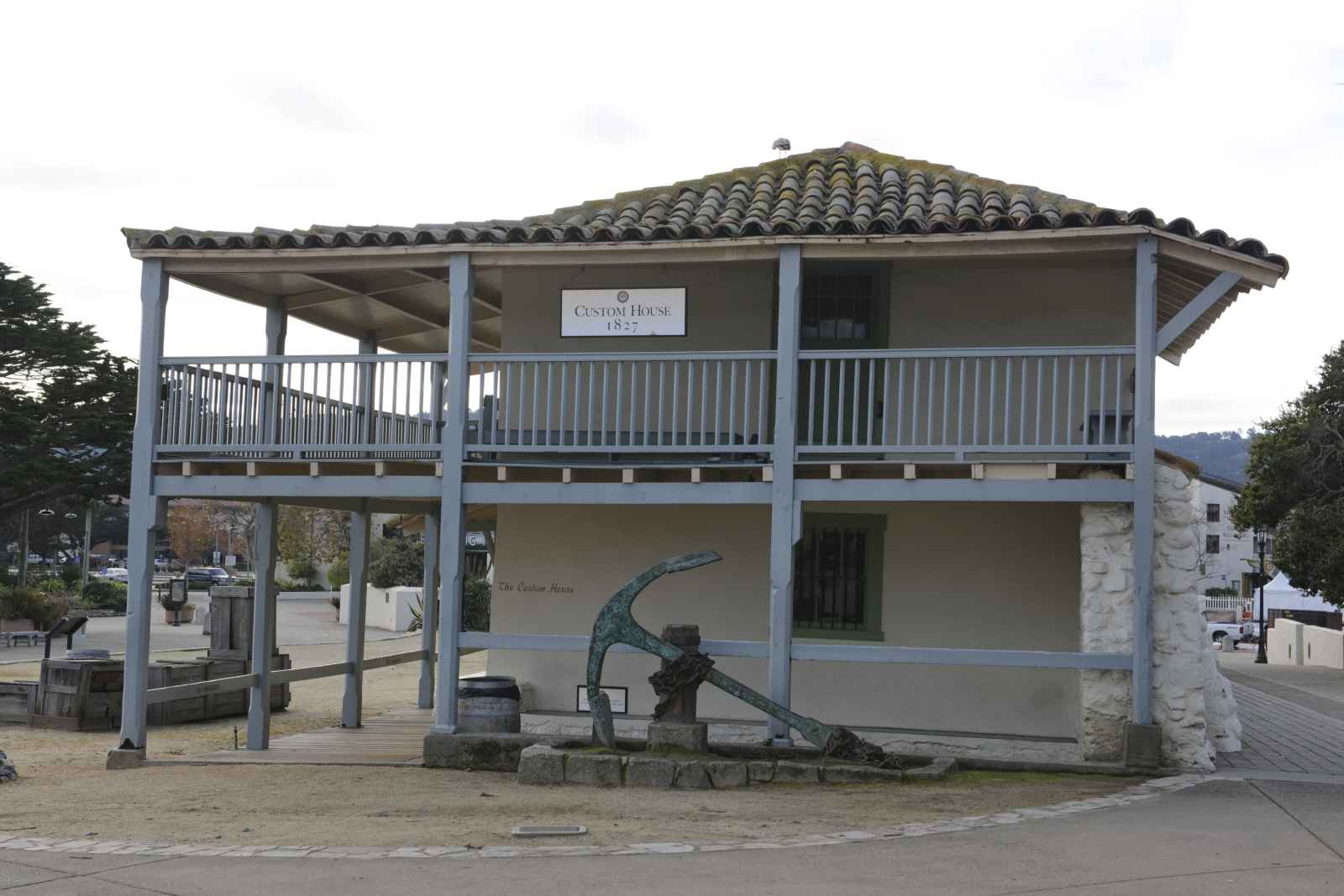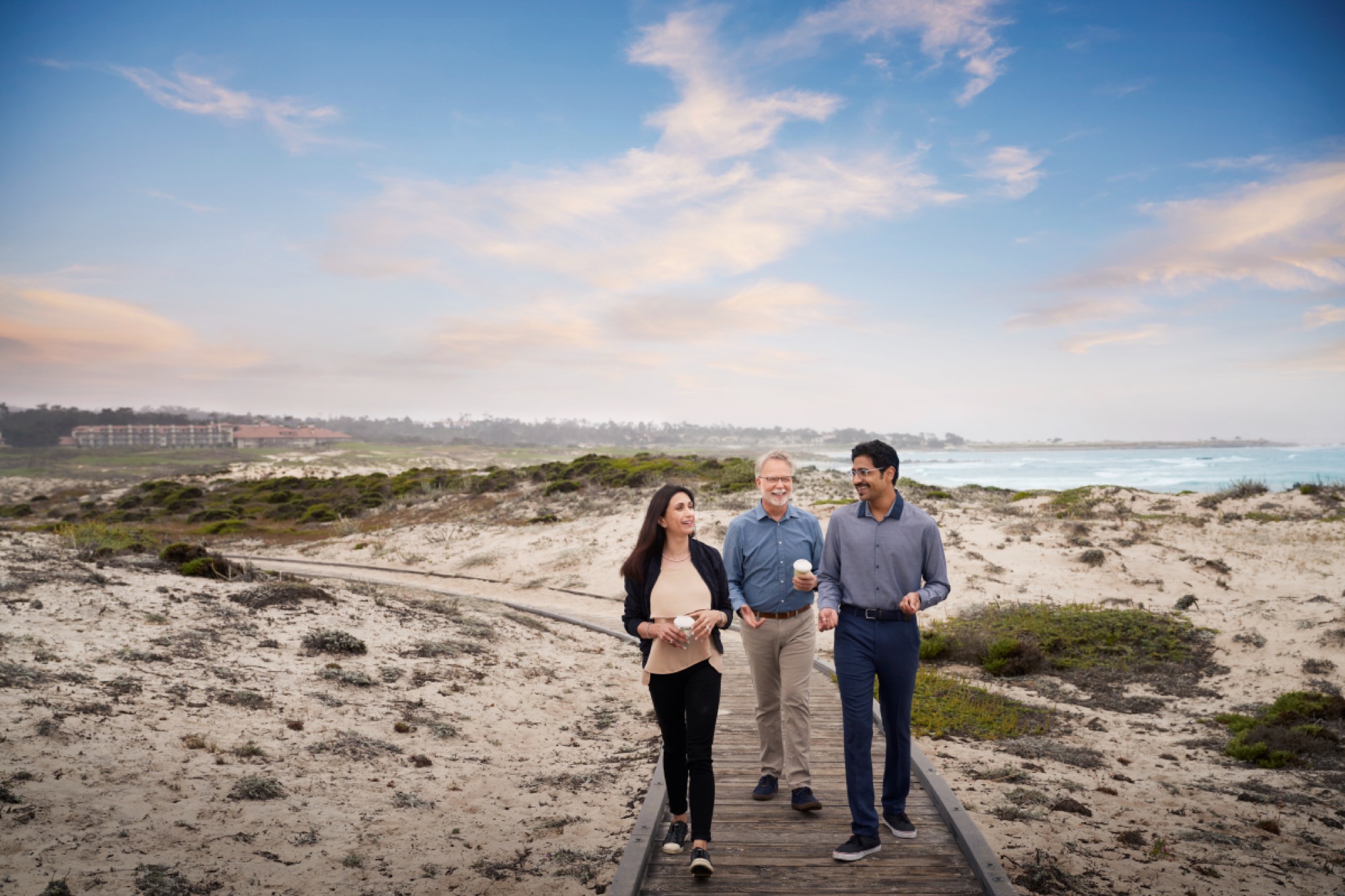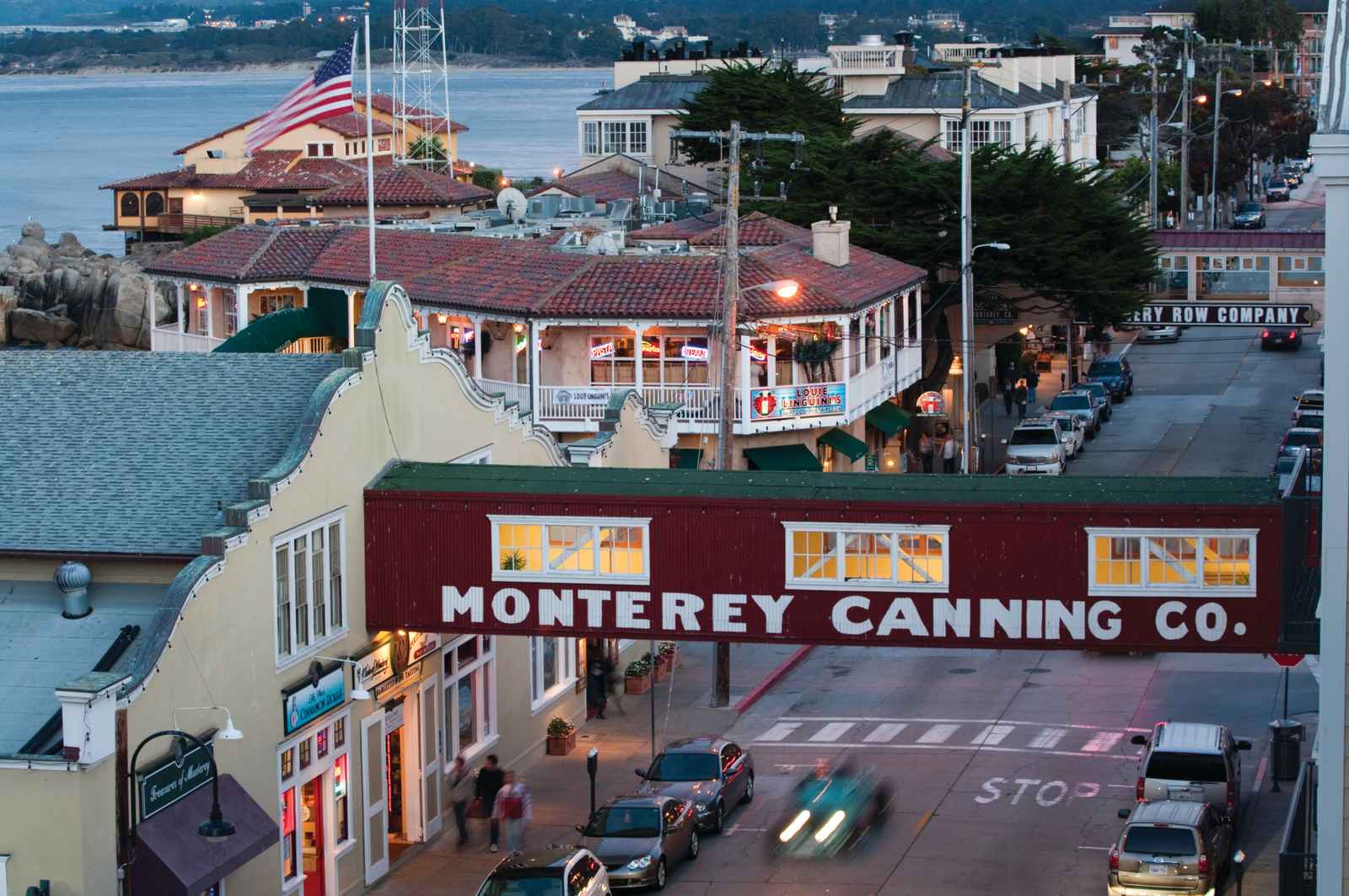55 historic sites lay along Monterey's two-mile "Path of History," providing residents and visitors with a unique, hands-on chance to experience California's rich heritage.
Self-Guided Tour of the Path of History!

Take yourself on a tour of the Path of History by following the yellow tiles on the sidewalk or with this informative map. You can also download our See Monterey App and follow the Monterey Path of History Itinerary. You will see and learn about important adobes and structures such as Colton Hall, Custom House Plaza, Pacific House and the Golden State Theatre.
Historic Events
For serious history buffs, you can celebrate several local historical events throughout the year, including Sloat's Landing Ceremony in honor of the historic July day when Commodore John Drake Sloat declared California as part of the United States. During Christmas, visitors can stroll through the adobes and enjoy brightly lit Luminaries light and the scent of Mexican hot chocolate.
Notable Historic Buildings
Only a couple of centuries ago, adobes were the cornerstone of everyday life for Spanish and Mexican residents of Monterey County. These whitewashed clay buildings were where people ate, slept, worked, entertained and practiced their religion.
Although times have changed, many of the adobes still stand as a bridge to Monterey County's past. A number of these adobes line Downtown Monterey's Path of History — a two-mile stretch that puts you face to face with the region's rich heritage. Here are a few memorable sites you'll find.
Royal Presidio Chapel
The Royal Presidio Chapel is the oldest structure in Monterey, constructed by the Spanish government in 1794. It's also the first architect-designed building in California and is now a National Historic Landmark. Learn more about its history here.
Robert Louis Stevenson House
If you're a fan of Robert Louis Stevenson's classic adventure tale "Treasure Island," you'll want to visit this building where he is said to have begun writing his legendary book. The original portion of the Robert Louis Stevenson House dates from the late 1830s.
Once a French hotel earlier on, the building now contains loads of Stevenson memorabilia, including manuscripts, first editions of his books and keepsakes donated by his family.
Colton Hall
In 1849, Colton Hall hosted the first California Constitutional Convention.
First Theatre
California's First Theater was built in the 1840s by Jack Swan, an English sailor, as a saloon and apartments. The 1st New York Volunteers, an Army unit stationed in Monterey, put on their first play at the building in 1850, establishing it as Monterey's theatrical destination. It's stood out as a major site of Monterey's artistic history ever since.
Larkin House
In 1834, Thomas Oliver Larkin adapted the traditional New England architectural style so that it utilized the adobe and redwood materials and adobe present in Monterey County. This resulted in Larkin House, one of the first adobes to establish a distinct Monterey Colonial architectural style.
Custom House Plaza
The Custom House, Monterey State Historic Park, at the entrance to Fisherman's Wharf, is the oldest government building in California and is California State Historic Monument #1.
A popular gathering place for Monterey visitors, Custom House Plaza is a win for historic preservationists. It contains many historic buildings including Custom House — Monterey County's oldest public building. Its visitor center also sells many interesting old-time knickknacks.
Pacific House
Pacific House has served many different purposes in its history. Since its construction in 1847, Pacific House has served a variety of functions. At one point military supplies were stored here. In the ensuing years, it served as a hotel, church and ballroom. Now? It's one of the most interesting history museums in the area.
Cooper-Molera Adobe
Cooper-Molera Adobe was home to three generations of Coopers. Built in the 1820s and remodeled many times until 1900, it now houses a visitor center with a shop full of old-time treasures. Its 2.5 acres also house an elaborate barn complex and gorgeous historic gardens, which is a must-visit.
Casa Soberanes
Casa Soberanes is a Mexican Colonial adobe structure furnished with handsomely preserved antique furniture, artwork and silver. Known as the "House of the Blue Gate" for its distinct blue-gated entrance, Casa Soberanes was built by Rafael Estrada in the 1840s. It's still home to beautiful antique furniture and modern Mexican folk art.
Casa Serrano
Built in 1843, Casa Serrano has a special significance in California's early history because it served simultaneously as one of the first schools after the U.S. flag was flown over the Custom House in 1846. In its later years even served as an Italian restaurant. Now it's open to the public on Saturdays from 2 to 4 pm for tours.
Casa Serrano is open Saturdays and Sundays 2-4 pm and is free to the public.
Casa Del Oro
Casa Del Oro: Located in the Custom House Plaza, Casa Del Oro translates to "House of Gold" in Spanish — perhaps a reference to the period when it was a gold dust exchange for miners. It's also been an army barracks, general store and saloon over the years.
Old Whaling Station
Old Whaling Station: Whaling played a significant role in California's early economic history. During the peak of that period, Old Whaling Station served as employee lodging for Old Monterey Whaling Company. As you walk up the front walkway to the Old Whaling Station, look down — you're standing on a path made of whale vertebrae!
First Brick House
First Brick House: This historic site lives up to its name — it was the first home in the area to be made of brick, which was thinner but more durable than the adobe blocks of the time. It now contains various exhibits touching on early Monterey history.
Lara Soto House
Lara Soto House: John Steinbeck is said to have always wanted to move into this humble adobe. During the brief time he lived here, Cannery Row was published and his iconic novella The Pearl was written. Visit this spot along the Path of History to see the home of one of the region's most legendary residents.
Monterey County has gone through many phases during its long and winding history. The sites along the path of history represent those different phases, each serving a variety of functions over their nearly two centuries in existence. A visit to them will put you in the shoes — and in some cases the homes — of some of the area's earliest and most influential residents.



